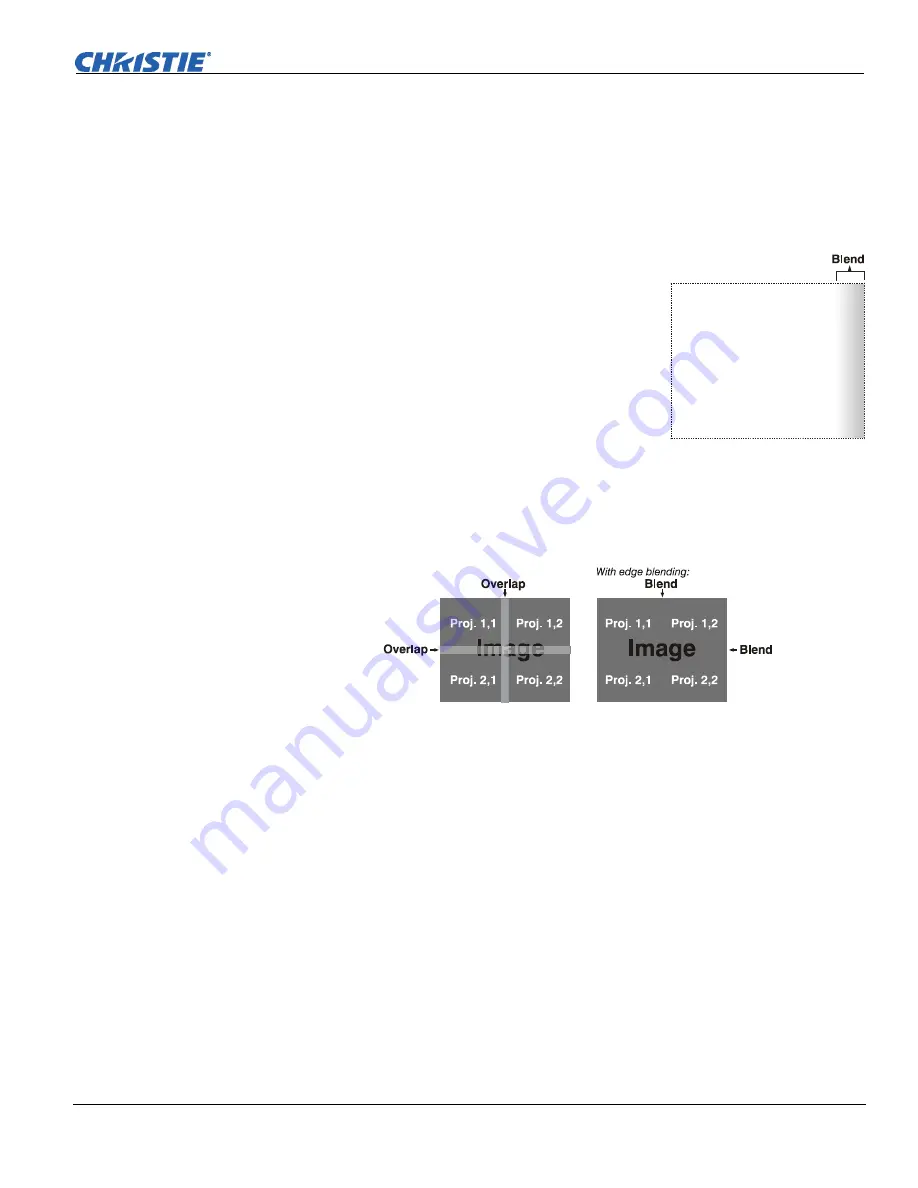
Section 3: Operation
Mirage S+/HD, Matrix S+/HD, Christie HD/DS/DW, DLV User’s Manual
3-67
020-100001-04 Rev. 1 (12/07)
- Software v1.6g or higher
.
Cancelling Brightness Uniformity
If you do not want to use or apply Brightness Uniformity settings, delete the
checkmark from the “Uniformity Enable” checkbox at the top of the
Brightness
Uniformity
menu.
Christie
Edge Blending
is an innovative set of software functions that can quickly and
easily blend white levels along the edges of multiple adjacent projected images to
create a single seamless larger image.
What is a Blend?
In simple terms, a blend appears as a gradient strip
along an edge of a projected image. It is darkest along
the extreme edge of the image, and lightens nearer to
the rest of the image (see right).
How Are Blends Used?
In multiple-projector walls, complementary blends between neighboring images can
compensate for the extra “brightness” or intensity where these edges overlap. By
controlling blend width and other properties, you can achieve uniformity across the
group of images. Visible overlaps will disappear:
Figure 3.19. Edge Blending Concept
For best results, use the same projector model and type throughout your display wall.
In addition, avoid high-gain screens whenever possible—the optical performance of
such screens demands minimal image offset, thus projectors must be located very
close to one another.
Edge blending software controls are located in the two-page
Edge Blending
submenu—access via
Configuration
menu, then go to the
Geometry and Color
menu
and select
Edge Blending
. The
More
option opens the second page of the
Edge
Blending
submenu.
Main Functions
Use Edge Blending controls to set the precise
width
,
shape
and
midpoint
you need to
blend overlapping edges together smoothly.
•
Blend Width
determines how much area is used for blending along an overlapping
edge. Slide bar values represent the number of eight-pixel steps used for the
blend. For example, a setting of “eight” creates a blended edge 24 pixels wide. A
setting of “0” signifies no blending. For best results in most applications, use a
blend width of 16-48 steps (128-384 pixels).
Edge Blending
f






























